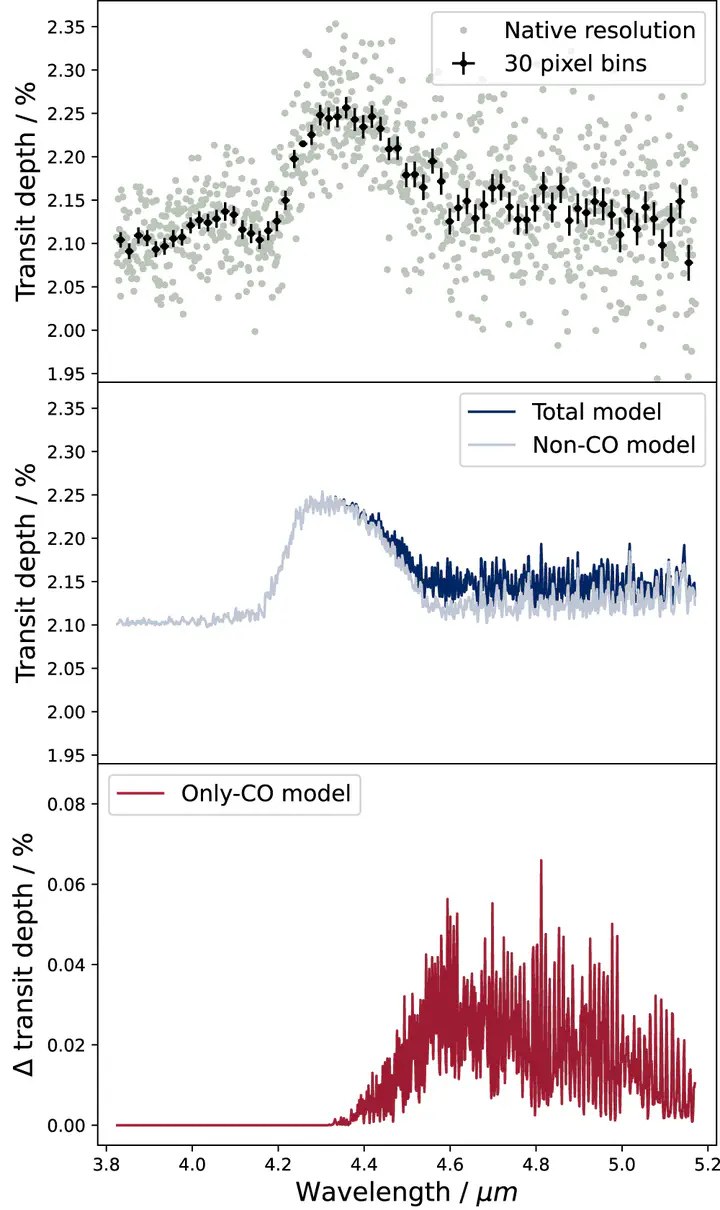Detection of Carbon Monoxide’s 4.6 Micron Fundamental Band Structure in WASP-39b’s Atmosphere with JWST NIRSpec G395H
 Fig. 2: Observed and modelled transmission spectra
Fig. 2: Observed and modelled transmission spectraCarbon monoxide (CO) is predicted to be the dominant carbon-bearing molecule in giant planet atmospheres and, along with water, is important for discerning the oxygen and therefore carbon-to- oxygen ratio of these planets. The fundamental absorption mode of CO has a broad, double-branched structure composed of many individual absorption lines from 4.3 to 5.1 ensuremathμm, which can now be spectroscopically measured with JWST. Here we present a technique for detecting the rotational sub-band structure of CO at medium resolution with the NIRSpec G395H instrument. We use a single transit observation of the hot Jupiter WASP-39b from the JWST Transiting Exoplanet Community Early Release Science (JTEC ERS) program at the native resolution of the instrument (R åisebox-0.5ex~ 2700) to resolve the CO absorption structure. We robustly detect absorption by CO, with an increase in transit depth of 264 ensuremath± 68 ppm, in agreement with the predicted CO contribution from the best-fit model at low resolution. This detection confirms our theoretical expectations that CO is the dominant carbon-bearing molecule in WASP-39b’s atmosphere and further supports the conclusions of low C/O and supersolar metallicities presented in the JTEC ERS papers for WASP-39b.